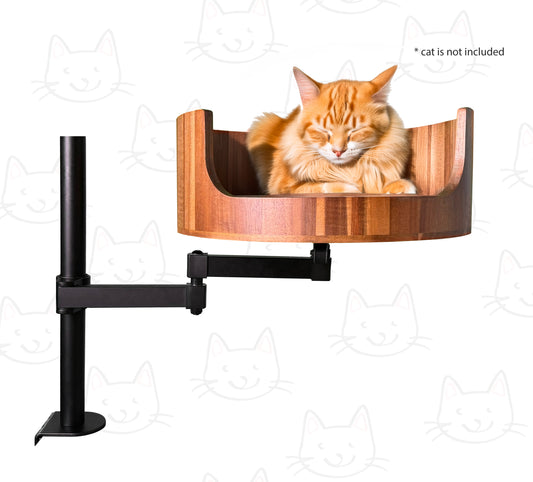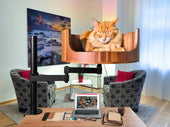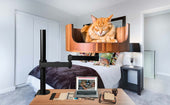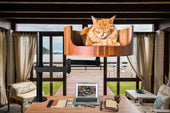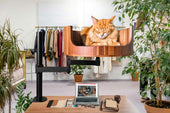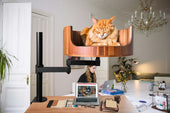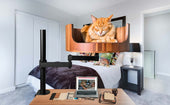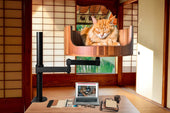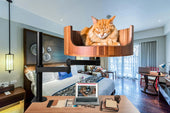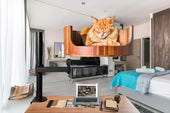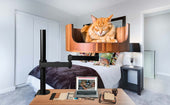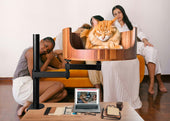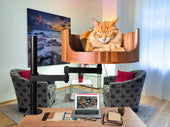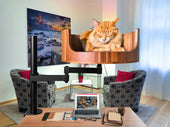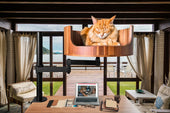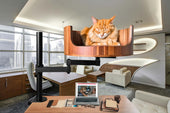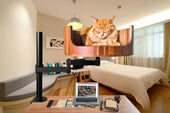
Cat Wagging Tail Back and Forth: What It Means
Share
Cat owners have long been fascinated by the various ways in which their feline companions communicate with them. One behavior that often leaves cat owners puzzled is when their cat begins to wag its tail back and forth. This seemingly subtle movement can actually convey a lot of information about your cat's current mood and intentions. Understanding the meaning behind this specific behavior can help cat owners better interpret and respond to their pet's needs.
In this article, we will delve into the intricacies of cat tail wagging, exploring the different reasons why cats engage in this behavior and what it could potentially signify. From playful to aggressive gestures, a cat's tail wagging can provide valuable insight into their emotions and overall well-being. By the end of this article, you will have a better grasp of how to decipher your cat's tail movements and respond accordingly, strengthening the bond between you and your furry friend.
1. Cat wagging their tail back and forth may signal agitation, excitement, or arousal.
2. It is essential to pay attention to the context and accompanying body language to understand the meaning behind a cat's tail wagging.
3. Slow, gentle tail movements typically indicate a content or relaxed cat, while fast, aggressive wagging can indicate a potential threat.
4. Cats also wag their tails during play or hunting activities, displaying their predatory instincts.
5. Understanding your cat's tail language can help improve communication and strengthen the bond between pet and owner.
Understanding Cat Tail Behavior
Cats use their tails as a form of communication to express their feelings and emotions. When a cat wags its tail back and forth, it can indicate a range of emotions such as excitement, frustration, or aggression. It is important to pay attention to other body language cues along with the tail wagging to accurately interpret what your cat is feeling.
Excitement and Playfulness
A cat wagging its tail back and forth rapidly while engaging in play or interactive activities is usually a sign of excitement and playfulness. Cats may exhibit this behavior when they are hunting a toy, chasing a laser pointer, or interacting with their human or another pet. It is important to differentiate this type of tail wagging from other forms of behavior to ensure that your cat is enjoying the playtime.
Aggression and Warning Signs
On the other hand, a cat wagging its tail slowly or rapidly with twitching movements can be a sign of aggression or warning. When a cat is feeling threatened or uncomfortable, they may wag their tail back and forth as a way to express their displeasure. It is essential to give your cat space and assess the situation to avoid any potential conflicts or aggressive behaviors.
Stress and Anxiety
In some cases, a cat may wag its tail back and forth as a result of stress or anxiety. Changes in the cat's environment, introduction of new pets, loud noises, or unfamiliar scents can trigger this behavior. It is crucial to provide a safe and comfortable space for your cat to help alleviate their stress and anxiety. Seeking guidance from a veterinarian or animal behaviorist can also be beneficial in addressing underlying issues contributing to your cat's tail wagging behavior.
Desk Cat Nest FAQ
What are the common reasons for a cat wagging their tail back and forth?
Cats often wag their tails back and forth as a sign of agitation, stress, or excitement. It can also be a way for them to communicate their emotions or intentions to their owners or other animals.
Can providing a Desk Cat Nest help reduce a cat's tail wagging behavior?
Yes, providing a cozy and comfortable space like a Desk Cat Nest can help reduce a cat's stress levels and provide them with a sense of security. This can, in turn, help reduce excessive tail wagging behavior.
How should I introduce my cat to the Desk Cat Nest?
It's best to place the Desk Cat Nest in a quiet and safe area where your cat feels comfortable. You can encourage your cat to explore the nest by placing treats or toys inside. It may take some time for your cat to get used to the new space, so be patient and allow them to explore at their own pace.
Is the Desk Cat Nest easy to clean?
Yes, the Desk Cat Nest is designed with removable and washable covers for easy cleaning. Simply remove the covers and wash them according to the care instructions provided.
Can the Desk Cat Nest accommodate multiple cats?
The Desk Cat Nest is designed to accommodate one cat comfortably. If you have multiple cats, it's recommended to provide each cat with their own nest to prevent any potential conflicts over territorial space.
In conclusion, choosing a Desk Cat Bed can greatly help with managing cat wagging tail back and forth. This innovative product provides a comfortable and secure space for your feline friend to relax and destress, reducing their tendency to exhibit anxious behaviors like tail wagging. The raised design of the Desk Cat Bed also promotes better posture and circulation for your cat, contributing to their overall health and well-being. With its durable construction and easy-to-clean materials, this cat bed is a valuable choice for pet owners looking to address their cat's tail wagging behavior while providing a cozy and inviting space for them to rest. Invest in a Desk Cat Bed today and give your furry companion the comfort and support they deserve.

